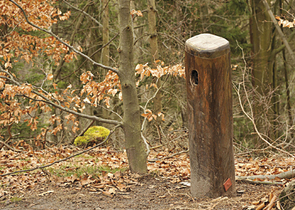Nature Conservation 2010 — 2. 8. 2010 — Special Issue
Monitoring Visitor Attendance and Its Impacts on Nature in the České Švýcarsko/Bohemian Switzerland

In the České Švýcarsko/Bohemian Switzerland National Park, attendance has been monitored since its designation in 2000. Since 2005, the numbers of entries into the National Park by visitors are systematically monitored through automatic accounting system.
Within the project entitled as The Comprehensive Nature Environment Monitoring Scheme in the České Švýcarsko/Bohemian Switzerland National Park, the number of monitored sites increased from 9 to 15. The project has been financed from the European Economic Area Financial Mechanism/Norwegian Financial Mechanism. For monitoring the National Park’s attendance by visitors, the sites located on the most important tourist routes, transboundary roads into the Sächsische Schweiz/Saxon Switzerland National Park and selectively, also those situated in the České Švýcarsko/Bohemian Switzerland NP’s Zone I. were chosen. Flow of visitors at the individual sites has been particularly monitored as well as bilateral exchange of visitors between both the National Parks and illegal passing the most strictly protected areas. Since 2008, the numbers of entries by visitors have been monitored by the Eco-counter automatic counting system, the technology recording a jump in temperature caused by passing of a visitor. The data are gathered all the year round, 24 hours a day, at 1-hour intervals and they are collected by a visual read-out using a pocket computer each month. Later, they are stored at the FTP (File Transport Protocol) server, where they can be downloaded by all the authorized users. The data are processed by the specialized Eco-PC software which can assess the state and trends in various time periods and intervals and export them in tables or figures. The NP Administration main task is to develop a long data time series which can be used as a background for consequent research and surveys. Long-term knowledge of trends in NP’s attendance by visitors can be applied by the NP Administration for making qualified decisions both in controlling the numbers of entries by visitors carried out for the purpose of appropriate nature conservation and management, and in supporting the development of the area for educational and of knowledge activities and for holiday-making in the region.

